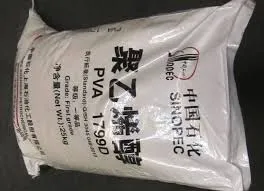Understanding the Compound with CAS Number 9004-65-3 A Focus on Methylcellulose
Methylcellulose, associated with the chemical substance bearing the CAS number 9004-65-3, is a fascinating compound that plays a significant role across various industries, particularly in food, pharmaceuticals, and cosmetics
. As a water-soluble polymer derived from cellulose, methylcellulose exhibits unique properties that make it a valuable ingredient in numerous applications.What is Methylcellulose?
Methylcellulose is synthesized from cellulose, a natural polymer found in plant cell walls. The process of methylation involves substituting hydroxyl groups of cellulose with methyl groups, resulting in a compound that is soluble in cold water yet gels upon heating. This distinctive characteristic is attributed to the hydrogen bonding and the molecular structure of methylcellulose, which enables it to transition between a viscous solution and a gel-like state.
Applications of Methylcellulose
1. Food Industry One of the most prominent uses of methylcellulose is as a food additive, where it serves multiple functions. It acts as a thickening agent, emulsifier, and stabilizer, improving the texture and consistency of various food products such as sauces, dressings, and baked goods. Additionally, methylcellulose is widely utilized in vegetarian and vegan products as a plant-based substitute for gelatin, providing a similar texture without using animal-derived ingredients.
2. Pharmaceutical Applications In the realm of pharmaceuticals, methylcellulose finds its application in the formulation of tablets and topical ointments. Its ability to form a film and retain moisture makes it an essential component in controlled-release formulations. Moreover, it is employed as a laxative due to its bulking agent properties; it absorbs water in the intestines, facilitating bowel movements without stimulating the bowel directly.
9004-65-3

3. Cosmetic Products The cosmetic industry benefits immensely from methylcellulose, as it acts as a thickener, emulsion stabilizer, and film-forming agent in products like creams, lotions, and hair styling gels. Its safety profile and biocompatibility make it an ideal choice for formulations designed for sensitive skin types, enhancing the overall efficacy and texture of cosmetics.
4. Construction and Building Materials Another interesting application of methylcellulose is in the construction industry, where it is incorporated into cement- and gypsum-based products. It enhances the workability and adhesion of mortars and plasters while also improving water retention properties, thereby contributing to the longevity and durability of construction materials.
Safety and Regulations
Methylcellulose is generally regarded as safe (GRAS) by the U.S. Food and Drug Administration (FDA) and is permitted for use in food products. Extensive research has demonstrated that it does not cause significant adverse health effects when used appropriately. However, as with any compound, it is essential to adhere to the recommended usage levels to ensure both safety and efficacy.
Conclusion
Methylcellulose, denoted by the CAS number 9004-65-3, is a versatile and valuable compound with a broad spectrum of applications across various sectors. Its unique properties, including solubility in cold water, gel formation upon heating, and its thickening abilities, make it indispensable in food, pharmaceuticals, cosmetics, and construction materials. As industries continue to innovate and refine their formulations, the role of methylcellulose is likely to expand further, solidifying its position as a vital ingredient in many everyday products. Understanding and harnessing the potential of this remarkable compound opens up new possibilities for sustainable and effective solutions in multiple fields.
-
Rdp Powder: Key Considerations for Wholesalers in the Building Materials IndustryNewsJul.08,2025
-
Key Considerations for Wholesalers: Navigating the World of Hpmc - Based ProductsNewsJul.08,2025
-
Hpmc Detergent: Key Considerations for WholesalersNewsJul.08,2025
-
Key Considerations for Wholesalers: China Hpmc For Tile Adhesive, Coating Additives, Concrete Additives, and MoreNewsJul.08,2025
-
Crucial Considerations for Wholesalers: Navigating the World of Construction MaterialsNewsJul.08,2025
-
Key Considerations for Wholesalers Sourcing Additive For Cement, Additive For Concrete, Additive For Putty from Additive Manufacturer Shijiazhuang Gaocheng District Yongfeng Cellulose Co., Ltd.NewsJul.08,2025




